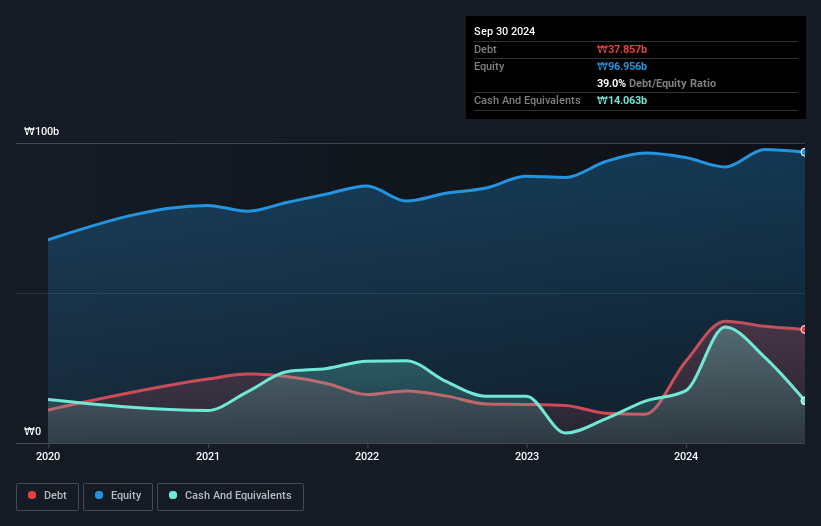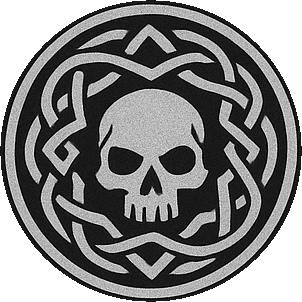- South Korea
- /
- Basic Materials
- /
- KOSDAQ:A225530
Bokwang Industry (KOSDAQ:225530) Seems To Use Debt Quite Sensibly
Howard Marks put it nicely when he said that, rather than worrying about share price volatility, 'The possibility of permanent loss is the risk I worry about... and every practical investor I know worries about.' So it seems the smart money knows that debt - which is usually involved in bankruptcies - is a very important factor, when you assess how risky a company is. As with many other companies Bokwang Industry Co., Ltd. (KOSDAQ:225530) makes use of debt. But is this debt a concern to shareholders?
What Risk Does Debt Bring?
Debt and other liabilities become risky for a business when it cannot easily fulfill those obligations, either with free cash flow or by raising capital at an attractive price. Ultimately, if the company can't fulfill its legal obligations to repay debt, shareholders could walk away with nothing. While that is not too common, we often do see indebted companies permanently diluting shareholders because lenders force them to raise capital at a distressed price. By replacing dilution, though, debt can be an extremely good tool for businesses that need capital to invest in growth at high rates of return. When we think about a company's use of debt, we first look at cash and debt together.
See our latest analysis for Bokwang Industry
How Much Debt Does Bokwang Industry Carry?
The image below, which you can click on for greater detail, shows that at September 2024 Bokwang Industry had debt of ₩37.9b, up from ₩9.60b in one year. However, because it has a cash reserve of ₩14.1b, its net debt is less, at about ₩23.8b.

A Look At Bokwang Industry's Liabilities
We can see from the most recent balance sheet that Bokwang Industry had liabilities of ₩38.7b falling due within a year, and liabilities of ₩42.3b due beyond that. On the other hand, it had cash of ₩14.1b and ₩46.8b worth of receivables due within a year. So it has liabilities totalling ₩20.1b more than its cash and near-term receivables, combined.
Given Bokwang Industry has a market capitalization of ₩157.7b, it's hard to believe these liabilities pose much threat. But there are sufficient liabilities that we would certainly recommend shareholders continue to monitor the balance sheet, going forward.
We measure a company's debt load relative to its earnings power by looking at its net debt divided by its earnings before interest, tax, depreciation, and amortization (EBITDA) and by calculating how easily its earnings before interest and tax (EBIT) cover its interest expense (interest cover). Thus we consider debt relative to earnings both with and without depreciation and amortization expenses.
Bokwang Industry has a low net debt to EBITDA ratio of only 1.2. And its EBIT easily covers its interest expense, being 10.3 times the size. So we're pretty relaxed about its super-conservative use of debt. In fact Bokwang Industry's saving grace is its low debt levels, because its EBIT has tanked 40% in the last twelve months. Falling earnings (if the trend continues) could eventually make even modest debt quite risky. The balance sheet is clearly the area to focus on when you are analysing debt. But it is Bokwang Industry's earnings that will influence how the balance sheet holds up in the future. So if you're keen to discover more about its earnings, it might be worth checking out this graph of its long term earnings trend.
Finally, while the tax-man may adore accounting profits, lenders only accept cold hard cash. So it's worth checking how much of that EBIT is backed by free cash flow. During the last three years, Bokwang Industry produced sturdy free cash flow equating to 77% of its EBIT, about what we'd expect. This cold hard cash means it can reduce its debt when it wants to.
Our View
Based on what we've seen Bokwang Industry is not finding it easy, given its EBIT growth rate, but the other factors we considered give us cause to be optimistic. In particular, we are dazzled with its conversion of EBIT to free cash flow. Considering this range of data points, we think Bokwang Industry is in a good position to manage its debt levels. Having said that, the load is sufficiently heavy that we would recommend any shareholders keep a close eye on it. When analysing debt levels, the balance sheet is the obvious place to start. However, not all investment risk resides within the balance sheet - far from it. For example, we've discovered 1 warning sign for Bokwang Industry that you should be aware of before investing here.
If, after all that, you're more interested in a fast growing company with a rock-solid balance sheet, then check out our list of net cash growth stocks without delay.
Valuation is complex, but we're here to simplify it.
Discover if HC BoKwang IndustryLtd might be undervalued or overvalued with our detailed analysis, featuring fair value estimates, potential risks, dividends, insider trades, and its financial condition.
Access Free AnalysisHave feedback on this article? Concerned about the content? Get in touch with us directly. Alternatively, email editorial-team (at) simplywallst.com.
This article by Simply Wall St is general in nature. We provide commentary based on historical data and analyst forecasts only using an unbiased methodology and our articles are not intended to be financial advice. It does not constitute a recommendation to buy or sell any stock, and does not take account of your objectives, or your financial situation. We aim to bring you long-term focused analysis driven by fundamental data. Note that our analysis may not factor in the latest price-sensitive company announcements or qualitative material. Simply Wall St has no position in any stocks mentioned.
About KOSDAQ:A225530
HC BoKwang IndustryLtd
Manufactures and sells aggregates, ascons, and ready mixed concrete in South Korea.
Slight risk with mediocre balance sheet.
Market Insights
Community Narratives



